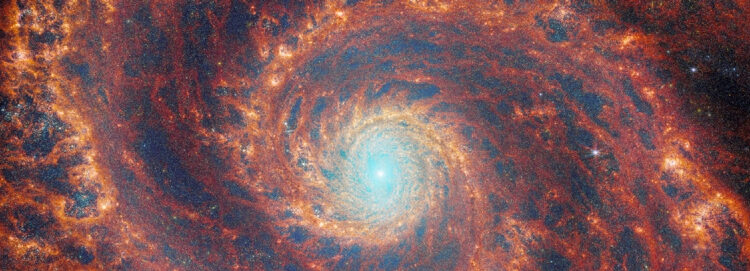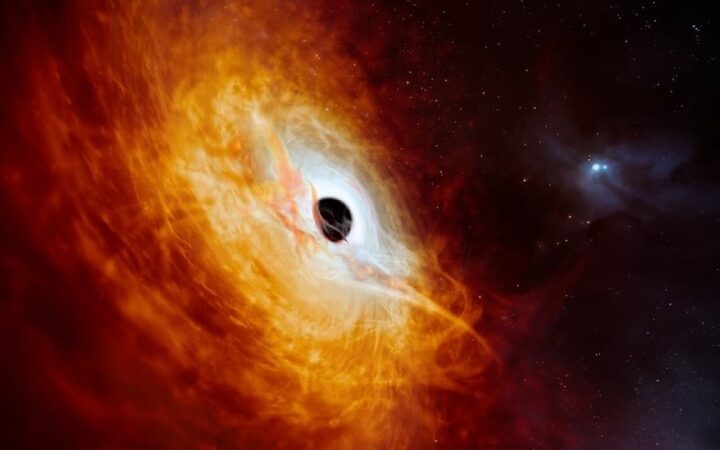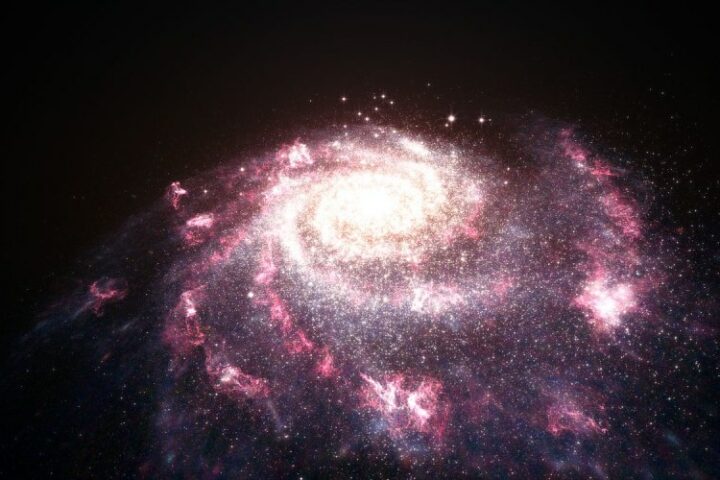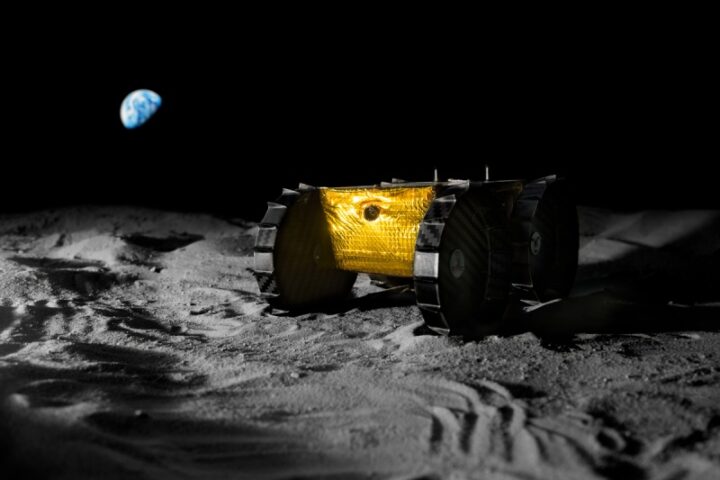The magnificent spiral galaxy M51, often known as the Whirlpool Galaxy, has been photographed by the James Webb Space Telescope.
The image exhibits complex and displays the galaxy’s well-developed spiral arms.
The Whirlpool Galaxy, which is around 27 million light-years from Earth in the constellation Canes Venatici, is well-known for its turbulent interaction with NGC 5195, a nearby dwarf galaxy.
The unique and pronounced spiral arms of the Whirlpool Galaxy are thought to be a result of NGC 5195’s gravitational pull. These galaxies are among the most researched pairings in the night sky as a result of their interaction.
The image was produced by combining information from Webb’s Mid-InfraRed Instrument (MIRI) and Near-InfraRed Camera (NIRCam). It exposes regions of ionized gas produced by recently formed star clusters, heated dust regions penetrating the galaxy, and reprocessed light from complex molecules forming on dust grains.
This M51 observation is a member of the FEAST series, which stands for Feedback in Emerging Extragalactic Star Clusters. The goal of the FEAST observations is to find out how stellar feedback and star formation interact in environments outside the Milky Way galaxy.
Stellar feedback, a critical process that controls the rates at which stars originate, is the energy released by stars into their surrounding environments.
The goal of the FEAST observations is to find and analyze star nurseries in galaxies outside the Milky Way. Other observatories have offered glimpses of star formation before the Webb telescope was operational, either at the beginning or after the stars destroyed their natal gas and dust clouds with their energy.
Scientists may now view star clusters developing from their natal clouds in galaxies outside of our local group for the first time thanks to the Webb telescope. They can determine how long it takes for these stars to clear out their gas and poison it with newly created metals.
In order to better understand how the star formation cycle and metal enrichment are controlled within galaxies, as well as the timelines for planet and brown dwarf formation, scientists are researching these processes.
- Compared to Lamborghinis or McLarens, the Corvette ZR1 hits 60mph faster - December 21, 2024
- A fierce AI war has erupted between Google and OpenAI - December 21, 2024
- The Hindi version of Salaar: Ceasefire, starring Prabhas, also made a big impression on digital platform after Box Office - December 19, 2024








